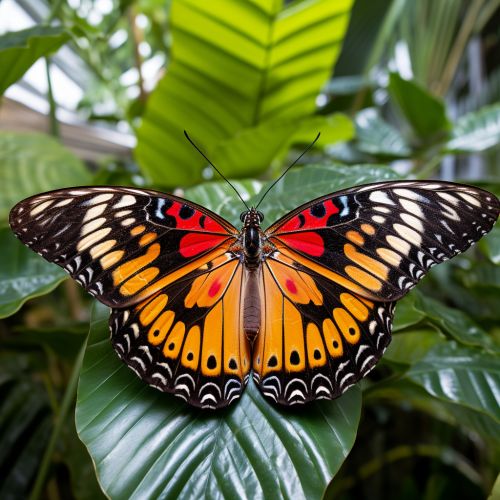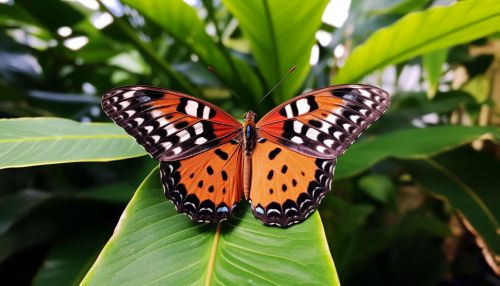Danaus (genus)
Taxonomy and Description
The genus Danaus, commonly known as the Milkweed butterflies, is a group of butterflies in the family Nymphalidae. It was first described by Fabricius in 1807. The genus is named after Danaus, a mythological king in Egypt and founder of Argos in Greek mythology.


This genus is primarily recognized for its bright orange and black patterned wings, which serve as a warning to predators of their toxic nature. The toxicity is derived from their primary food source in the larval stage, the milkweed plant. The genus contains twelve species, the most famous of which is the Monarch (Danaus plexippus) known for its long-distance migratory patterns.
Distribution and Habitat
Danaus species are distributed globally, with a higher concentration in tropical and subtropical regions such as Central and South America, Africa, Asia, and Australia. They inhabit a variety of habitats, including meadows, forest edges, marshes, deserts, and suburban areas.
Life Cycle
The life cycle of Danaus species follows the typical butterfly pattern of egg, larva (caterpillar), pupa (chrysalis), and adult. The female butterfly lays her eggs on the underside of milkweed leaves, which upon hatching, the caterpillars consume, ingesting the plant's toxic compounds. This toxicity is retained through the caterpillar's metamorphosis into an adult butterfly, providing it with a defense mechanism against predators.
Behavior and Ecology
Danaus species are diurnal, meaning they are active during the day. They exhibit a variety of behaviors, including mating, egg-laying, and feeding on nectar from a variety of flowering plants. Some species, like the Monarch, are known for their long-distance migration, traveling thousands of kilometers to overwinter in warmer climates.
Conservation Status
While some species of Danaus are abundant, others are considered threatened or endangered due to habitat loss, climate change, and the decline in milkweed populations. Conservation efforts are ongoing to protect and preserve these species and their habitats.
